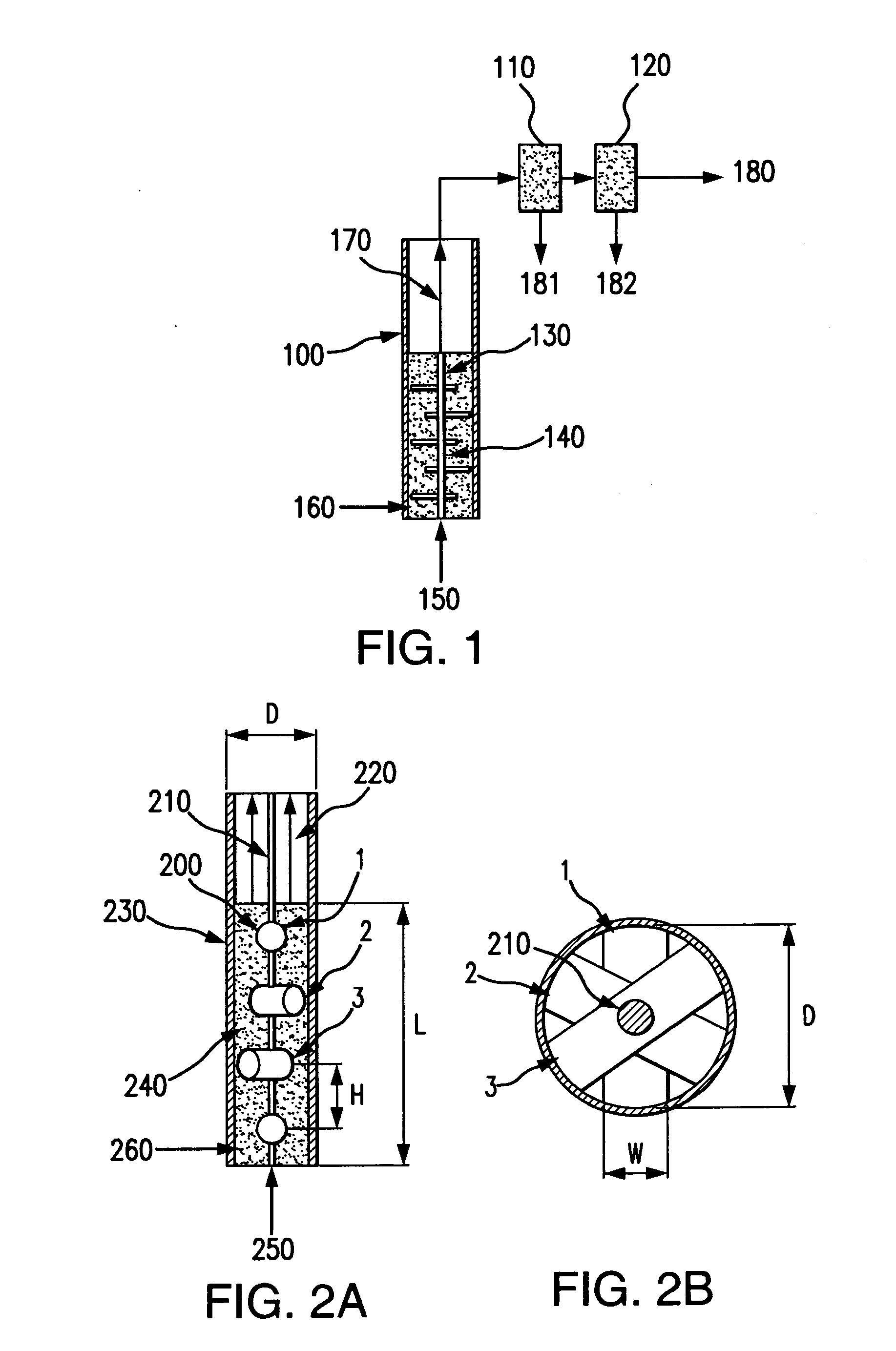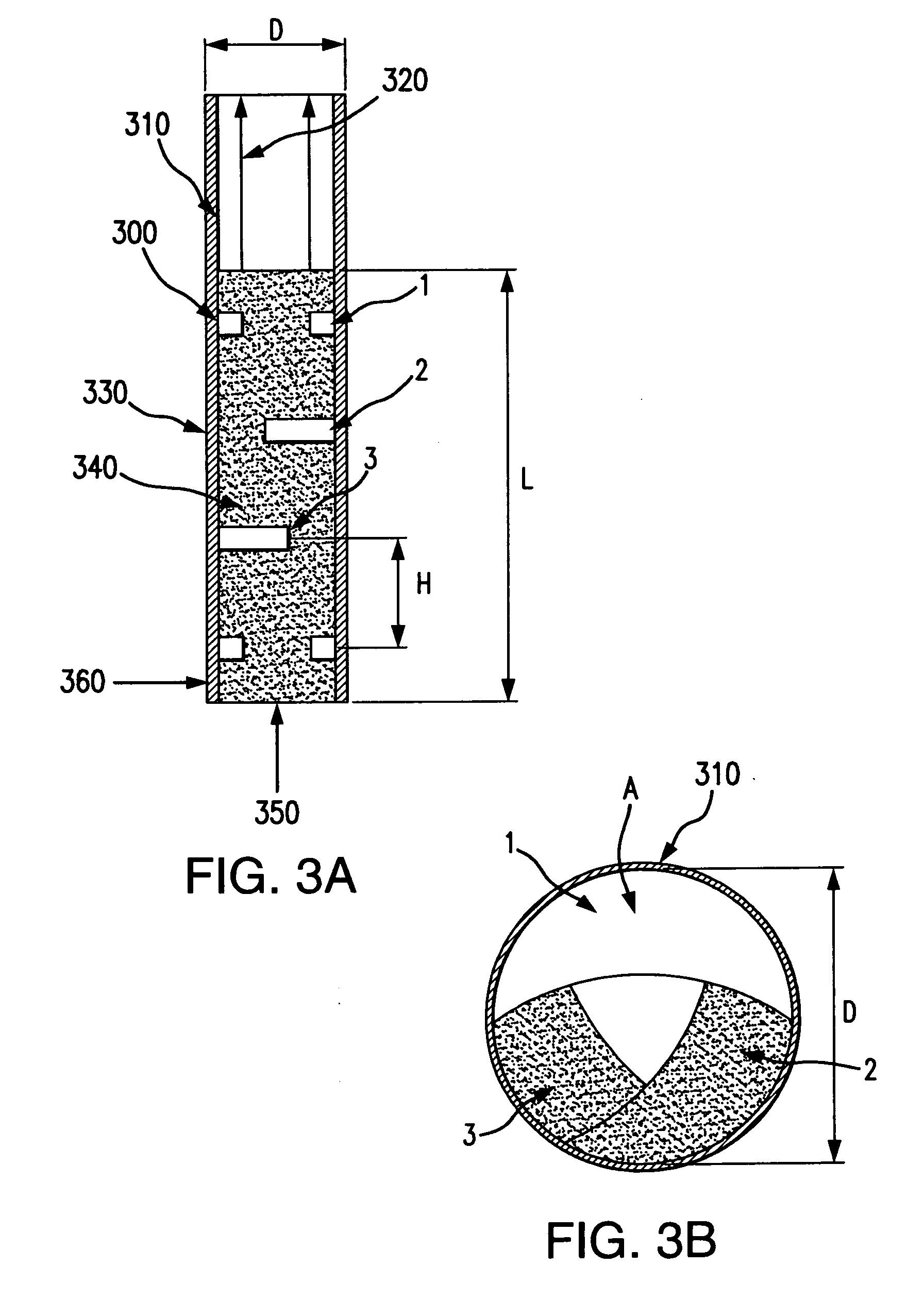Bubbling bed catalytic hydropyrolysis process utilizing larger catalyst particles and smaller biomass particles featuring an Anti-slugging reactor
a catalytic hydropyrolysis and biomass particle technology, which is applied in the direction of physical/chemical process catalysts, metal/metal-oxide/metal-hydroxide catalysts, hydrocarbon oil treatment products, etc., can solve the problems of inability to realize practical or economic viability, inability to transport and utilize this product, and chemically unstable liquid produced by conventional pyrolysis tend to thicken, etc. , to achieve the effect of inhibiting the slugging of the bed
- Summary
- Abstract
- Description
- Claims
- Application Information
AI Technical Summary
Benefits of technology
Problems solved by technology
Method used
Image
Examples
examples
[0120]Fluidized Bed Mixing Studies without Insert
[0121]Experiments were carried out in order to study slugging in bubbling fluidized beds, consisting of relatively large, spherical solid particles similar to the catalyst used in the hydropyrolysis process of the present invention. The bed material consisted of porous alumina spheres, with a mean diameter of 1800 microns. The diameters of the particles of bed material were all within plus or minus 200 microns of the mean diameter. The bulk density of the bed material was 0.75 kilograms per liter.
[0122]Fluidized beds expand as fluidizing gas is passed through them, so they are most readily compared on an unexpanded basis. In this case, the unexpanded depth of the bed is the depth of the bed when no fluidizing gas is passing through it.
[0123]Beds with an unexpanded L / D near 6 were studied in two clear plastic tubes. One tube had an inner diameter of 3.33 centimeters, and the other had an inner diameter of 7.62 centimeters. The smaller ...
PUM
| Property | Measurement | Unit |
|---|---|---|
| partial pressure | aaaaa | aaaaa |
| temperature | aaaaa | aaaaa |
| temperature | aaaaa | aaaaa |
Abstract
Description
Claims
Application Information
 Login to View More
Login to View More - R&D
- Intellectual Property
- Life Sciences
- Materials
- Tech Scout
- Unparalleled Data Quality
- Higher Quality Content
- 60% Fewer Hallucinations
Browse by: Latest US Patents, China's latest patents, Technical Efficacy Thesaurus, Application Domain, Technology Topic, Popular Technical Reports.
© 2025 PatSnap. All rights reserved.Legal|Privacy policy|Modern Slavery Act Transparency Statement|Sitemap|About US| Contact US: help@patsnap.com



